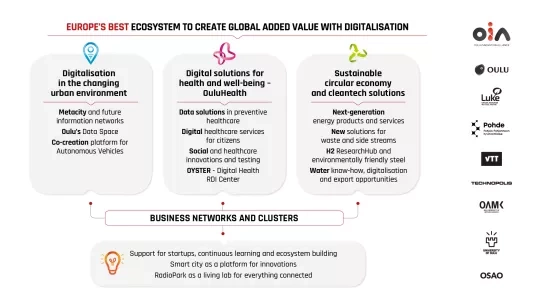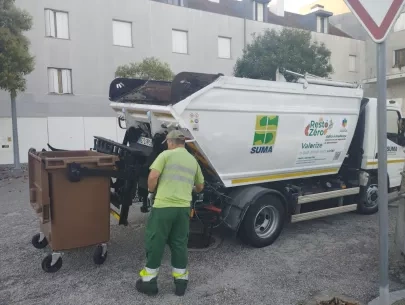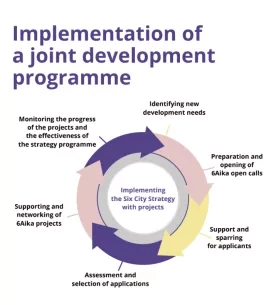Making the most of solar energy in the new residential area of Antwerp Circular South (3rd Zoom-In)
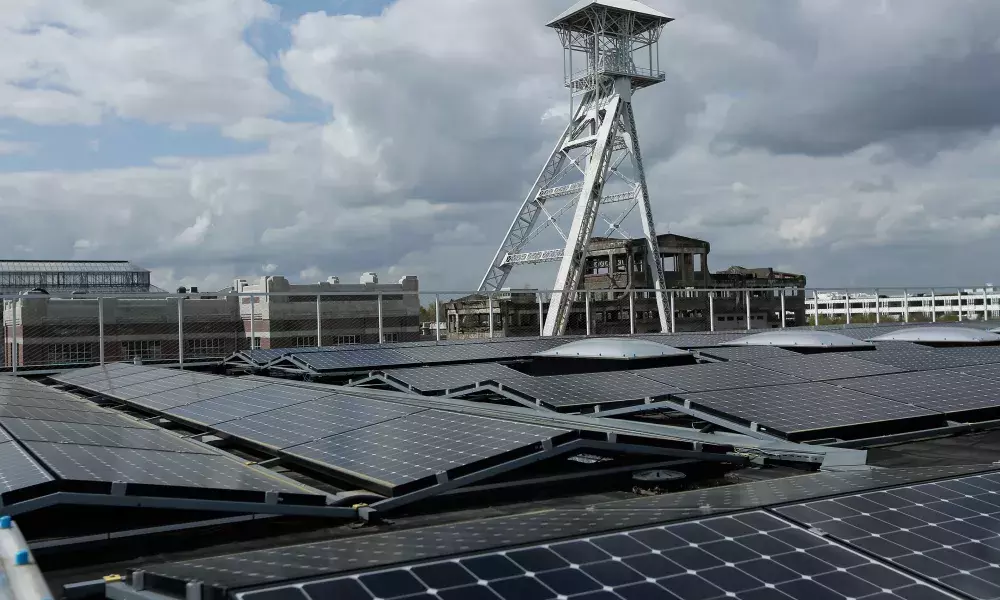
The Antwerp Circular South project positions circularity as a community challenge for the New South district (a newly created district in Antwerp). It engages the district’s new residents in co-creating online and offline initiatives and changing their consumption behaviours. A number of advanced technical solutions covering different resource streams (energy, water and waste) will be tested. You can find further details about the project on the UIA website.
A large share of the activities focuses on the production and consumption of renewable energy, from the Sun. PVs, BIPVs and storage Batteries were sought to be installed for the benefits of flat residents, with a close follow-up via smart meters and a dedicated app. An Energy community has taken form to coordinate the link between production and consumption.
The author would like to thank the partners for their inputs and reviews: Joren Hofman (City of Antwerp), Ine Swennen (Ecopower), Raf Ponnette (VITO/EnergyVille), Sam Verbelen (City of Antwerp) and Jan Pecinovsky (EnergieID).
The content of this Zoom-in does not reflect the official opinion of the Urban Innovative Actions Initiative. Responsibility for the information and views expressed in the Zoom-in lies entirely with the author.
SOLAR ENERGY? IN BELGIUM?
With 1,546 hours of sunshine per year in Belgium (Brussels’ reference) (as compared to 3,054 hours in Valetta, Malta, or 2806 in Lisbon, Portugal) (see the list of cities by sunshine duration), Belgium would certainly not be the first country you think of when developing a citizen-owned solar energy system. Yet, the potential of such energy, even in Belgium has been proven because it:
- Is free and without limits;
- Is efficient solution for green energy production;
- Brings return on investments; and,
- Is easy to install (technically and administratively)
In addition, according to Ine Swennen from Ecopower, solar energy could virtually provide a multitude of the energy currently consumed in Belgium. This is also an efficient way of converting available energy. Even more so than other sources of renewable energy sources such as wind: it can easily adapt to different environments. In particular, PVs (Photovoltaic Panels) and BIPVs (Building-integrated Photovoltaic panels) can be adjusted to the dense urban environment (whereas, for example, wind turbines would be too noisy or visible). It is less costly than wind energy and there is no need for permit to install PVs on a roof or BIPVs on a balcony.
Antwerp had signed the Covenant of Mayors and developed strong climate ambitions amongst which Local renewable energy production was part. A first project, Zoom in op dak, encouraged renewable energy production on individual roofs of houses. Yet, the City noticed it was difficult to develop such an approach for apartment building (in terms of roof space available and governance – energy sharing). As Joren Hofman, coordinator of Antwerp Circular South explained: “Urban residents often do not have the same opportunities as residents of single-family houses to invest in alleviating measures, such as renewable energy. Concerning the energy challenge, residents of apartment buildings have a limited roof surface for the installation of photovoltaics and lack space for batteries. If they seek to make use of renewable energy, they need to rely on a 'green contract'. This offers no incentives to adapt consumption behaviour to the peaks in renewable energy production, resulting in a collective challenge of grid balance. Such overload of the distribution network currently implies a necessity for more resources and materials: more defect household devices, replacement of transformers, thicker power cables, etc”. The City therefore sought to test it in Antwerp Circular South.
With 1,546 hours of sunshine per year in Belgium (Brussels’ reference) (as compared to 3,054 hours in Valetta, Malta, or 2806 in Lisbon, Portugal) (see the list of cities by sunshine duration), Belgium would certainly not be the first country you think of when developing a citizen-owned solar energy system. Yet, the potential of such energy, even in Belgium has been proven because it:
- Is free and without limits;
- Is efficient solution for green energy production;
- Brings return on investments; and,
- Is easy to install (technically and administratively)
In addition, according to Ine Swennen from Ecopower, solar energy could virtually provide a multitude of the energy currently consumed in Belgium. This is also an efficient way of converting available energy. Even more so than other sources of renewable energy sources such as wind: it can easily adapt to different environments. In particular, PVs (Photovoltaic Panels) and BIPVs (Building-integrated Photovoltaic panels) can be adjusted to the dense urban environment (whereas, for example, wind turbines would be too noisy or visible). It is less costly than wind energy and there is no need for permit to install PVs on a roof or BIPVs on a balcony.
Antwerp had signed the Covenant of Mayors and developed strong climate ambitions amongst which Local renewable energy production was part. A first project, Zoom in op dak, encouraged renewable energy production on individual roofs of houses. Yet, the City noticed it was difficult to develop such an approach for apartment building (in terms of roof space available and governance – energy sharing). As Joren Hofman, coordinator of Antwerp Circular South explained: “Urban residents often do not have the same opportunities as residents of single-family houses to invest in alleviating measures, such as renewable energy. Concerning the energy challenge, residents of apartment buildings have a limited roof surface for the installation of photovoltaics and lack space for batteries. If they seek to make use of renewable energy, they need to rely on a 'green contract'. This offers no incentives to adapt consumption behaviour to the peaks in renewable energy production, resulting in a collective challenge of grid balance. Such overload of the distribution network currently implies a necessity for more resources and materials: more defect household devices, replacement of transformers, thicker power cables, etc”. The City therefore sought to test it in Antwerp Circular South.
IMPLEMENTING A SOLAR ENERGY ECOSYSTEM
In the newly built district of Nieuw Zuid, the UIA Antwerp Circular South project has aimed at changing residents’ consumption of electricity, water and their waste production by combining technical devices with specific modalities via physical and virtual interfaces for a series of activities undertaken for and with the resideThis Zoom-in focuses on Solar energy production: the project sought to install PVs, BIPVs and Storage batteries at residents’ flats. The production of energy was meant to be followed closely via the use of smart meters, visible on a specific dashboard/application. A Business logic and blockchain were also set up to reward behaviours with circular coins (so-called “circules”) as part of a nudging experiment (see Zoom-In 2). An Energy community took form to coordinate the link between production and consumption.
In the newly built district of Nieuw Zuid, the UIA Antwerp Circular South project has aimed at changing residents’ consumption of electricity, water and their waste production by combining technical devices with specific modalities via physical and virtual interfaces for a series of activities undertaken for and with the resideThis Zoom-in focuses on Solar energy production: the project sought to install PVs, BIPVs and Storage batteries at residents’ flats. The production of energy was meant to be followed closely via the use of smart meters, visible on a specific dashboard/application. A Business logic and blockchain were also set up to reward behaviours with circular coins (so-called “circules”) as part of a nudging experiment (see Zoom-In 2). An Energy community took form to coordinate the link between production and consumption.
PVs, BIPVs and storage Batteries have been successfully procured and as such these devices were available to be installed during the project. As explained below (3.2), it has not been possible to install them so far, even if the installation of PVs is secured on 2 locations and BIPVs on 1. Instead, the project has used a virtual model to simulate the use of (BI)PVs and batteries as closely as possible to a real-life context.
The model is based on virtual PVs installed on apartment building roofs with energy produced partitioned amongst the apartments. The model monitors the energy produced and 60 smart meters installed in the flats provide data on the energy used: subtracting the energy partition to the energy consumed enables assessing which part of the energy consumed is coming directly from the PVs (and when). A similar model has been designed for the quantity of energy stored in virtual batteries. The data for the simulation of the energy produced by the (BI)PVs come from a lab set-up organised at VITO/EnergyVille in Genk (BE).
An app enables residents to follow their consumption (that stemming from virtual PVs as well as their energy provider, to the exclusion of data from batteries): they can compare data of their own consumption against own consumption average and to that of the other residents. Participants can see their own virtual PV-production.
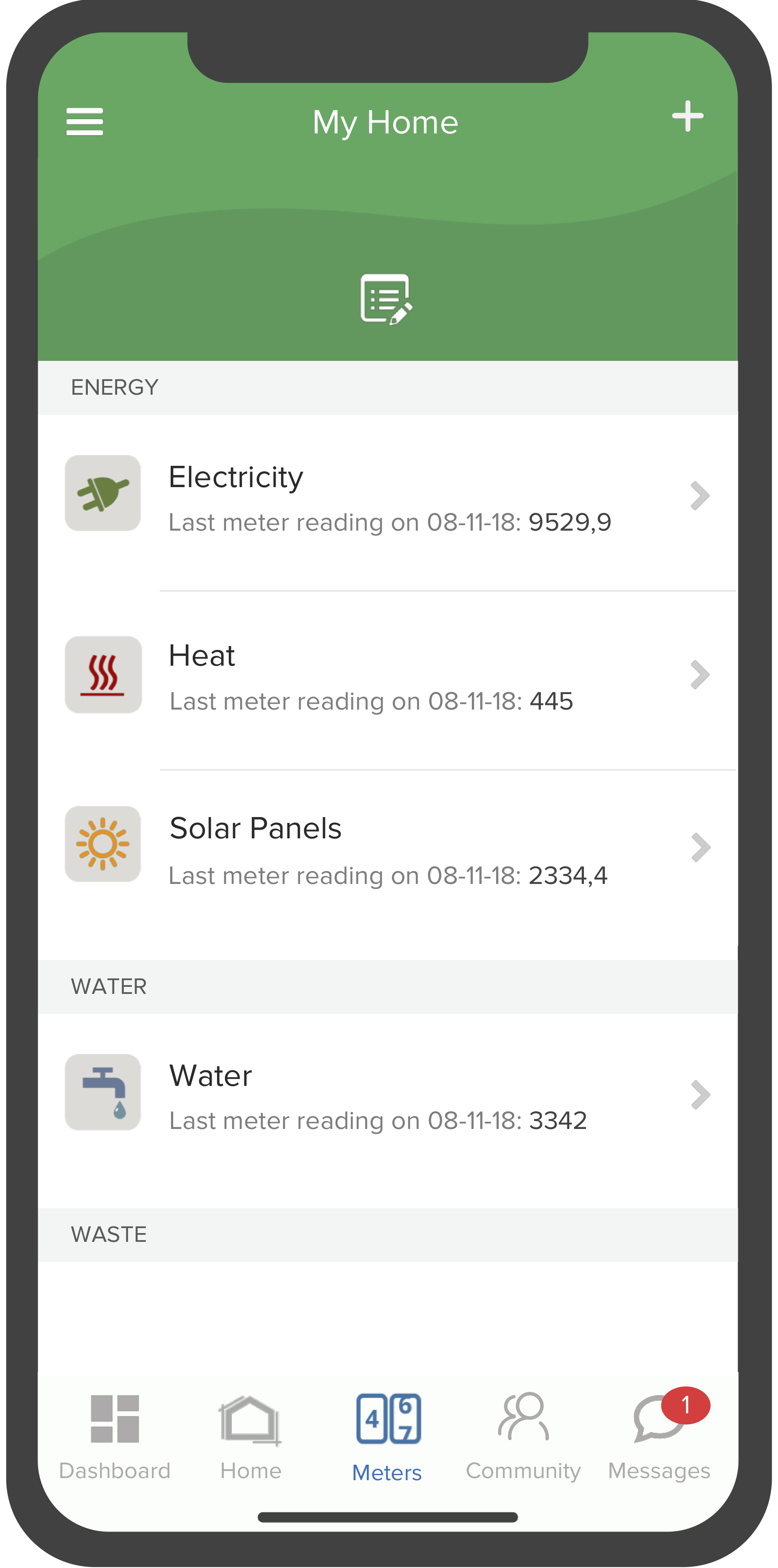
An Energy cooperative was designed to coordinate the link between production and consumption. It takes the form of a “Renewable and Citizen Energy Community” (as per Article 2(16) of the EU Renewables Directive and article 2(11) of the EU Electricity Directive) within an already existing cooperative, Ecopower. The residents' participation in the sharing of an energy installation requires an additional level of engagement and administrative elaboration. Participants co-created the modalities of the cooperative and participate in its management once the energy system is up and running. Members are co-investors and owners of the (BI)PVs on the buildings in Nieuw Zuid. The Energy Community has been promoted via “Energy cafes”: informal gatherings with debates and drinks which have provided general information about the Energy Community as well as exchanges on other energy related issues, which can bring residents together (e.g. on electric car sharing possibilities). At the moment of writing, the Energy Community hosts 81 members (1 more than the original target).
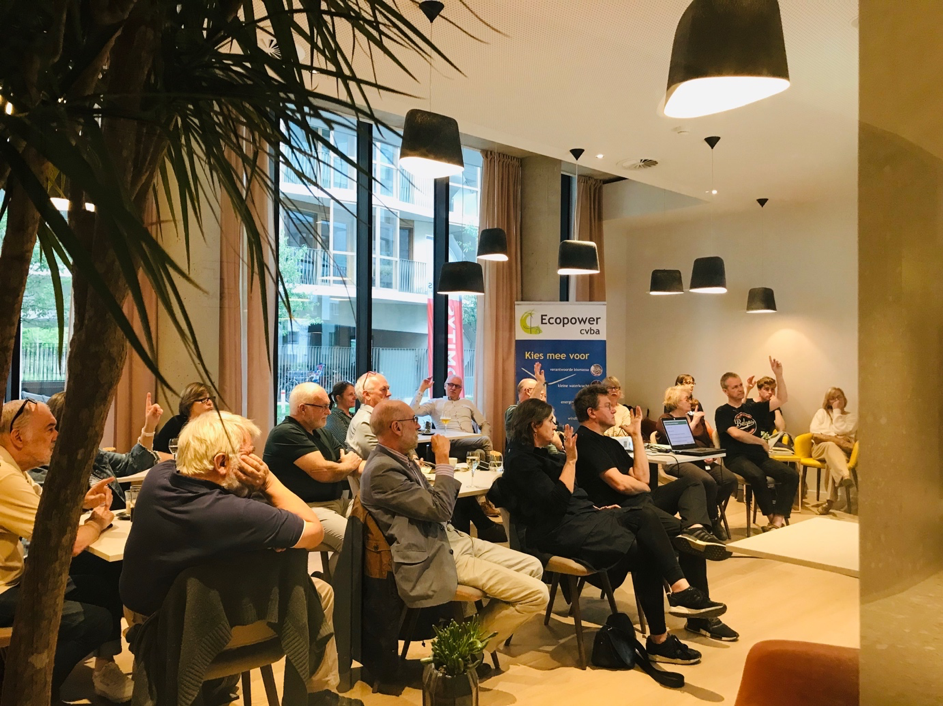
By the end of the UIA project, when (BI)PVs are installed, the energy produced that is not consumed within the building will be injected into the grid. Benefits will be shared amongst the Energy Community members. It is estimated that the yearly profit from the 3 installed (BI)PVs will be 5,000 euros. According to a survey sent to the members, these could be spent by the Renewable and Citizen Energy Community to carry out renewable energy projects, as well as investments in charging stations for electric vehicles and bicycles, realising more electrical vehicles in the neighbourhood and raising awareness of rational use of energy and renewable energy.
The app will be upscaled to the whole of Belgium by EnergieID. The process for the after UIA maintenance of the app still needs to be designed (and monetized).
Discussions are also on-going with the Real Estate Developer of New South - Triple Living - to preinstall the remaining 70 smart meters smart meters in new homes: an added service for new owners who could enjoy it directly.
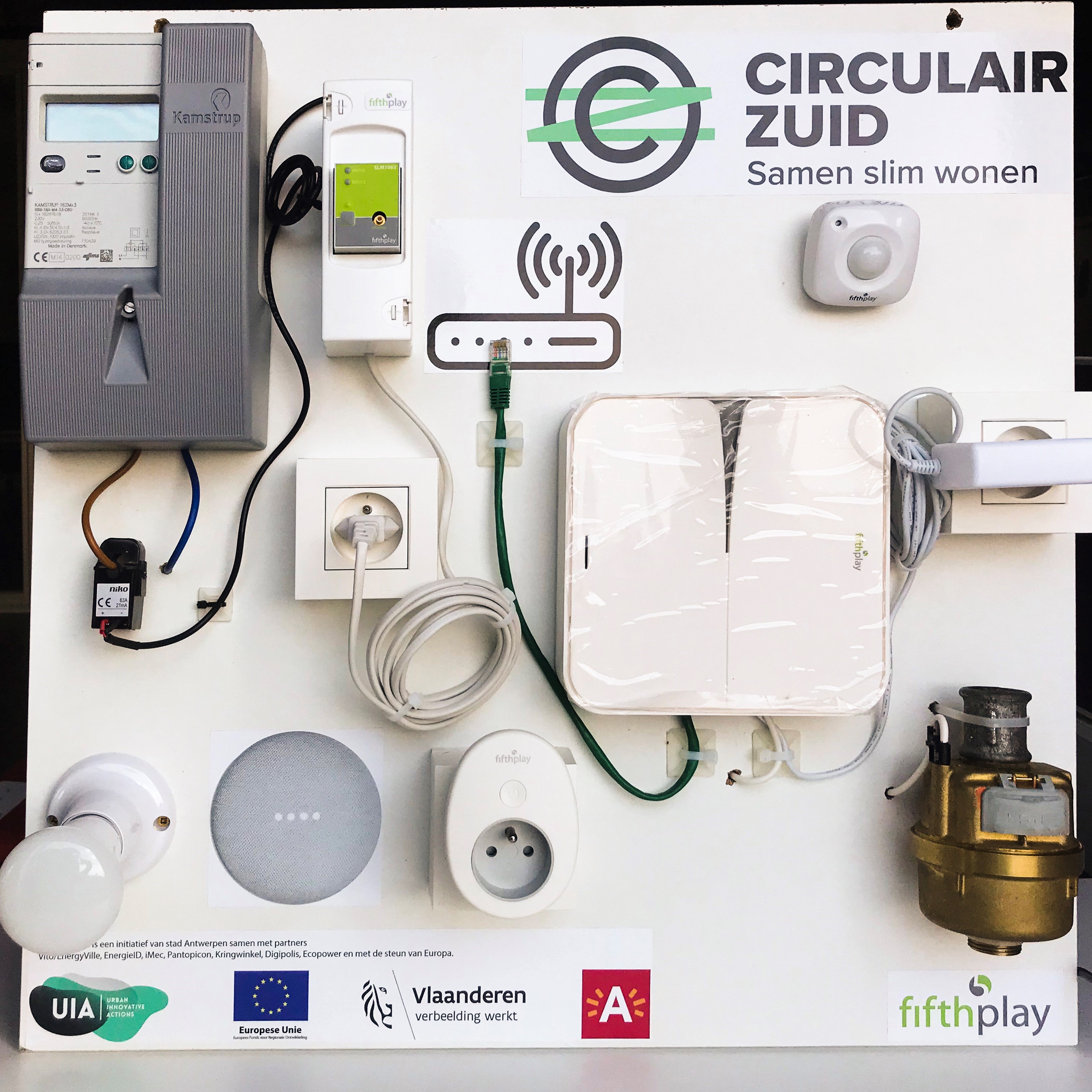
Ecopower will be renting the roofs for the PVs for the Energy Community for 20 years. Then, the ownership will move from the Community to the building owners – when the role of Ecopower can be further assessed.
The Ecopower survey also laid down the basis for further reflection upon the future (governance) structure of the Renewable and Citizen Energy Community. Members want to keep on playing a role in the Community and especially in setting the future path of the energy group in the coming months. The majority wishes to support community building by supporting the search of extra roofs and/or to acting as ambassadors towards the neighbourhood. At the same time, they do not feel confident about being responsible for the technical management and support. As such, they wish Ecopower to remain in the lead. Ecopower from its side would be interested in carrying out this task but would need to identify a way to generate income out of its activities.
A COMPLEX IMBRICATION OF CONTEXTS
The project has been very active during 3 years in order to ensure it could actually implement what it had intended to do. Yet, it has faced a range of challenges due to the specific contexts within which it evolves, and which have prevented everything to go as planned.
The project has been very active during 3 years in order to ensure it could actually implement what it had intended to do. Yet, it has faced a range of challenges due to the specific contexts within which it evolves, and which have prevented everything to go as planned.
The first challenge in enabling individual solar energy production was to launch and implement an adequate Public Procurement process for the technical devices. It appeared to be challenging in terms of availability of products and companies on the market, as well as reliability of the producers. A first Public procurement for PVs, BIPVs and storage batteries showed no response from the market. This might have been on the one hand because of the specifics of BIPV (to be tailored to each building) making it difficultly viable financially for providers, on the other hand due to the small size of the market. The second Public Procurement was more successful. Yet, the consortium which was supposed to install the first PVs fell apart, cancelling the only secured opportunity to install PVs. The third Public Procurement, whereby requirements for BIPV had been relaxed, led to a successful Framework contract with three suppliers for PVs, BIPVs and Batteries.
The Public Procurements for smart meters (plugs and sensors) was successful, yet only some of them will be installed during the timing of the project, and, unfortunately, the smart meters provider has been bought out by a company and is about to stop these activities. The team had been seeking a solution to be able to use the smart meters after the end of the project and hoped for an agreement with the smart meter provider that data flow will be still available. In the end, the negotiations (and threat of breach of contract) have led to the smart meters’ provider to keep on maintaining the smart meters by March 2022.
In parallel, the project has struggled to identify locations for installing the PVs and BIPVs: at the beginning of the project, the Real Estate Developer withdrew its engagement to provide buildings (and roofs) for the (BI)PVs. The team had to find roofs and building owners, with a constant individual and tailored search with extra struggles: the secured locations appeared to be dependent upon external factors (changes in management, move to a new building, delays in construction, uncertainty about stability). The project never stopped looking for new locations and even extended its geographical coverage, but in the end it has faced much resistance to install them. For now, the installation of PVs is secured on Building 17 (office, 50 kWp) and on the Service centre Hof ter Beke (87 kWp). For BIPVs, it is secured on the building of the heat plant of DSO Fluvius (8,6 kWp). PVs might also be installed on PleinPubliek as part of its relocation in the “Blue Gate” district. Other discussions to secure an additional location at the Logistic Business Centre with new technologies (light weight panels) are currently also going on.
As for batteries, they have not been installed in houses even though they would have been needed in an Energy nudging experiment (see Zoom-In 2). It has appeared to be too difficult to install them as originally planned in common space of building, as participants are scattered into different buildings.
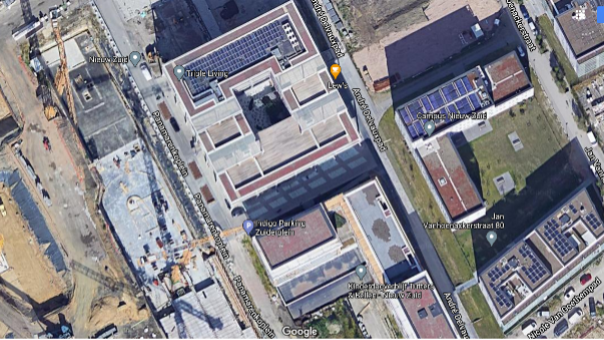
In its original proposal, the project sought to ensure that the extra individual production of energy via installation of PVs, BIPVs and storage batteries could have been shared directly with others (for free or against a fee) with other residents. Such an approach would have been possible by applying an exception of “Low regulated zone” on the apartment building roofs for the Electricity Directive (2009/72/EC) (then replaced by the Directive on common rules for the internal market for electricity (EU) 2019/944) and the Electricity Regulation (EC/714/2009) (later replaced by the new Regulation on the internal market for electricity (EU) 2019/943). It appeared that the legislative framework for exception was not ready yet. By submitting the project, the City expected the momentum to be there because the issue of energy exchange between individual consumers had gained more attention since it was a requirement for innovative solutions tackling grid balance. The current legislation actually prevents this direct exchange of energy amongst producers and requires the use – and payment – of the grid systems for energy transport, as well as intermediary for sale.
In addition, according to the current legislation, the financial benefits of the energy self-produced by (BI)PVs installed on an apartment building can take place if the energy fuels the common parts of the building (e.g. lift, light in the corridors) or if these (BI)PVs are to be split physically into smaller units each of them being directly linked to the electricity of the boards of each apartment.
The virtualisation model anticipates a change in the regulation, where the part of the energy produced by (BI)PVs that would normally be injected in the grid could be reinjected into the flats without splitting the (BI)PVs. At the moment, in such a system, this energy produced by the (BI)PVs cannot be discounted from the energy bill from the energy provider.
The model which is tested is one in which energy produced by PVs and stored in batteries is self-consumed directly by residents in real time or with a time shift (later via the batteries). The Energy community would benefit highly from the energy produced locally by the resident, as little of it as possible being reinjected into the grid. This would mean the optimal use of the PVs’ energy. Residents would be incentivised to consume energy during daytime, for immediate consumption (with the addition of batteries if available for storage. NB: such an option would require higher investments to ensure big enough batteries for adequate energy storage.)
In the current format of the Energy Community, in light of the legislation, the (BI)PVs owned by Ecopower (and as such by all the members) produce energy that can be partially used by members of the Community and partially sold to the market via the grid. The revenue generated by the sale of energy will be directly reinjected into the Community (see section 2.2).
In the 3rd Journal, we wondered whether the project was “ahead of its time”. Indeed, we stressed the immaturity of the market (see also above on Public Procurement). The technology is here, but implementing, inserting it into the market and changing consumer habits still requires time: going to the softer and more human-based aspect of the project.
The project started from the assumption that while Antwerp Circular South project is being implemented in a newly built district, the (new) residents made the conscious choice to move to a sustainable district. As such, the residents would have been eager to buy in to sustainable lifestyles. They would also be willing to create bonds and meet with neighbours, they are motivated and can really feel they co-own the neighbourhood. Everything seems to be possible. And this also goes along with the fact that the newest technologies and infrastructures can be used.
The visibility dilemma
Yet, it appeared that many residents were risk averse to the installation of PVs, BIPVs and batteries. Others refused to install them because of lack interest, or expressed uncertainty, lack of available large flat areas. This has in turn limited the snowballing effect amongst neighbours.
It has appeared to be even more difficult to join the whole project without the existence of PVs BIPVs in the Circular South project area, and without locally produced energy. Ecopower has sought to mitigate this with the organization of energy cafés and site visits.
The financial dilemma
It has been difficult to explain the added value of the project when the financial return would be quite low (estimated discounts on the energy consumption of the general parts of the buildings, and 5,000 euros for all the Energy Community members to be invested in community projects).
Investing in the Energy Community is also a risk: residents would have difficulties understanding the business model, the potential economic return – potential limited profit, lack of existing and visible information, lack of distance yet.
Similarly, the app does not show the financial value of reducing energy consumption. It is worth noting though that the project had never been about showing financial value of energy savings. As such, this was never foreseen as a game-changing feature in the recruitment process.
The expertise dilemma
Even if the potential members can be well informed by the (BI)PVs installers and the Energy Community, they still need to take responsibilities in signing a contract. Such a document can be potentially long with a piece of juridical and technical information that would be out of their individual expertise and knowledge. They might have opted out of this offer because of the complexity (to them) of the contractual framework behind it.
The complexity dilemma
In a building where each apartment is owned by a different person, where the resident is not necessarily the owner, it can be quite complex to organise a discussion with the owner(s). It is even more so when the ownership structure behind the building is composed of several layers. For example, discussions were quite advanced with a service residence. Yet, the building is owned by a bank. Which is owned by shareholders, each of whom would have needed to give their approval for installing the (BI)PVs. It appeared too cumbersome and the financial return too small for Domitys to embark on such a journey of trying to convince.
The population size dilemma
Antwerp Circular South started when a limited number of residents had moved in. Delays have also occurred along the way, limiting the overall potential population for joining the project. The critical mass to ensure that an adequate number of them would take part in the activities has not been reached.
The project has been embedded into the priorities of the City and has received its whole support for it. As part of its New Climate Action Plan with goals towards 2030 and 2050, the City of Antwerp will keep on developing such projects. The City is currently developing additional pilot projects that link energy objectives, social objectives and empowerment of disadvantaged groups in Antwerp. It supports the identification of affordable energetic solutions for the vulnerable target groups in the city (including local and collective initiatives on renewable energy, the leasing of energy-efficient installations and the sharing economy). It will also seek to develop opportunity related to energy storage demand management and smart charging: in parallel of the evolution of legislation (see below), the City will stimulate energy cooperatives and renewable energy communities and inform citizens and companies about the opportunities of this form of shared energy management; as well as to maximize the potential of solar and wind energy on apartment roofs. It is also working on a concession policy for cooperative investments or renewable energy communities in the urban heritage.
WHAT CAN OTHER CITIES LEARN FROM THIS EXPERIENCE?
We hope that Antwerp’s experience will be useful for other cities seeking to support solar energy project for individuals in apartment buildings. It seems that the most important takeaways and points to take into consideration are:
Time
- When implementing such a project in a newly built area, a fixed timing is extremely difficult to follow because of on-going delays in constructions, moves of the residents, etc. In addition, it would have been crucial to involve both the Real Estate Developer and citizens from the design phase of the neighbourhood to ensure more efficient collaboration and implementation;
- Ensuring identification of suitable roofs and community buy-in seems to be taking an average of 5 years. The project has secured 3 locations for the PVs and 81 Energy community members. Yet, it would have been more successful (and less stressful) with a longer time span.
Procurement
- Market screening and monitoring, especially for newer technologies, such as BIPVs is crucial;
- Ensuring strict contractual agreements is also key to prevent defaults from contractors.
Contexts
- This type of projects takes part in an interlacing of contexts, which requires an integrated approach and strong commitment from partners to co-create;
- This is also the opportunity to try and influence changes in the context: provide evidence for economic added value, designing a convincing narrative, … This might in turn support the transposition of the Directive on common rules for the internal market for electricity (EU) 2019/944) at regional level, as for now, stakeholders are concluding that the business case for solar energy on apartment buildings is not there yet.
We hope that Antwerp’s experience will be useful for other cities seeking to support solar energy project for individuals in apartment buildings. It seems that the most important takeaways and points to take into consideration are:
Time
- When implementing such a project in a newly built area, a fixed timing is extremely difficult to follow because of on-going delays in constructions, moves of the residents, etc. In addition, it would have been crucial to involve both the Real Estate Developer and citizens from the design phase of the neighbourhood to ensure more efficient collaboration and implementation;
- Ensuring identification of suitable roofs and community buy-in seems to be taking an average of 5 years. The project has secured 3 locations for the PVs and 81 Energy community members. Yet, it would have been more successful (and less stressful) with a longer time span.
Procurement
- Market screening and monitoring, especially for newer technologies, such as BIPVs is crucial;
- Ensuring strict contractual agreements is also key to prevent defaults from contractors.
Contexts
- This type of projects takes part in an interlacing of contexts, which requires an integrated approach and strong commitment from partners to co-create;
- This is also the opportunity to try and influence changes in the context: provide evidence for economic added value, designing a convincing narrative, … This might in turn support the transposition of the Directive on common rules for the internal market for electricity (EU) 2019/944) at regional level, as for now, stakeholders are concluding that the business case for solar energy on apartment buildings is not there yet.
About this resource
The Urban Innovative Actions (UIA) is a European Union initiative that provided funding to urban areas across Europe to test new and unproven solutions to urban challenges. The initiative had a total ERDF budget of €372 million for 2014-2020.
Similar content
